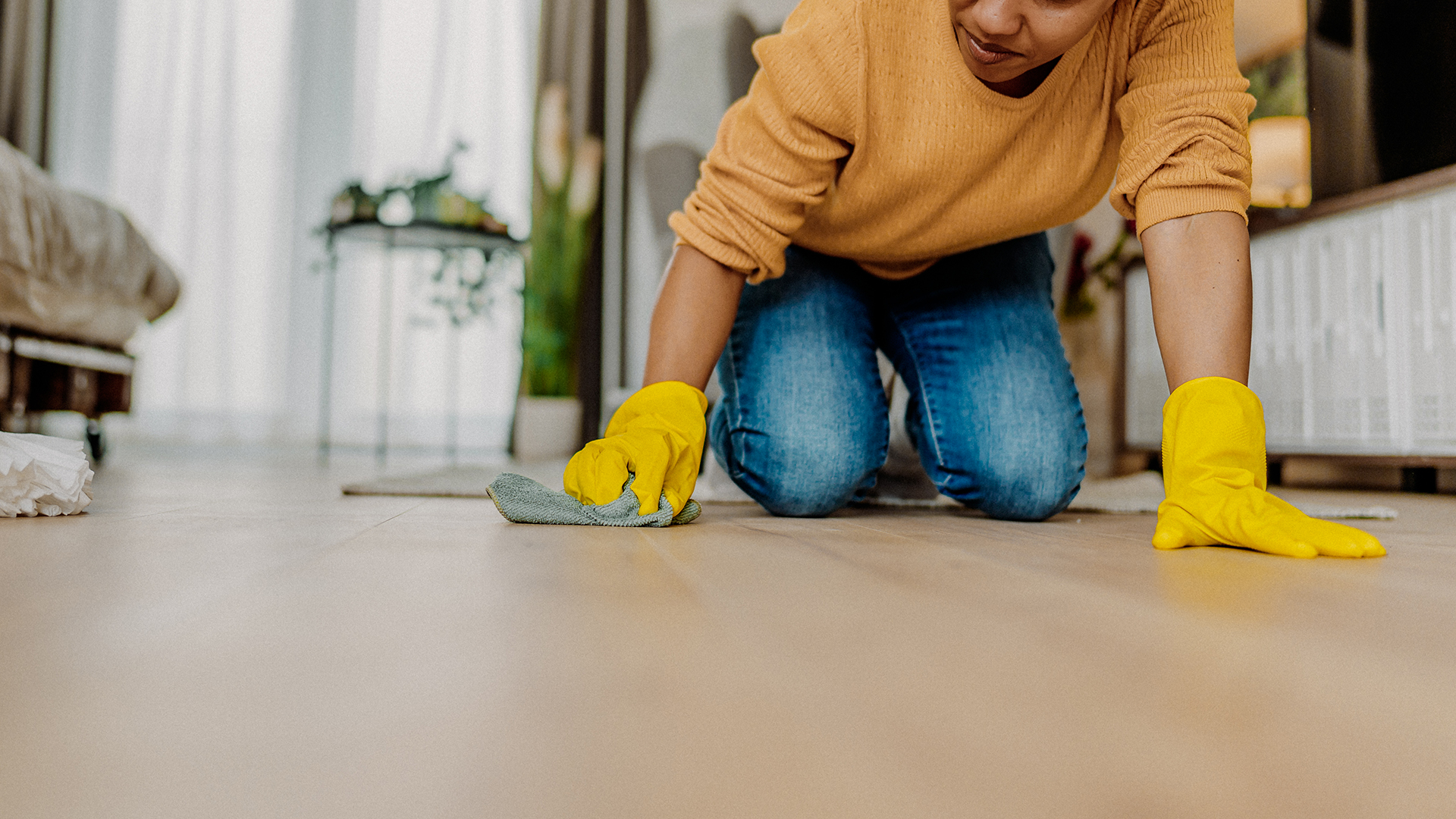5 ways to tackle stains on hardwood floors, according to a specialist
Keep your hard floors looking spick and span

Hardwood floors can be particularly tricky to keep looking smart, as spillages can quickly turn into stains. "Red wine, coffee and pet urine are among the worst types of stains and can permanently stain wooden flooring within the first few hours," says hardwood floor specialist Yarl Christie. "Oil-based stains can become permanent between 24 and 48 hours."
Read on for more of Yarl's advice on how to deal with stains, and stop them from ruining the look of your flooring. And if you're looking for a tool to help you stay on top of dust, check out our guide to the best vacuums for hardwood floors.
1. Mop spills as soon as you notice them
"Engineered hardwood flooring can be damaged by puddles of water or liquid, so it's advisable to mop up any spills as soon as you notice them before they have a chance to soak in and cause deeper stains," says Yarl, who is founder and CEO of Yorkshire-based flooring company Stories Flooring. "To clear a puddle or spill, use a dry mop rather than a wet or steam mop, as these can damage a finish over time."
Some substances will stain more quickly and more dramatically than others, but broadly speaking the longer you leave the spillage the worse the stain will become.
2. Use baking soda on surface stains
Stains that affect the top surface of the wood, causing the finish to discolor, are known as white stains. "The most effective methods of removing these kinds of stains is to use a mineral oil, mineral spirit or baking soda," explains Yarl. He suggests making a paste using baking powder and water and applying it to the stain. This can also help with neutralizing odors.

3. Try white vinegar
Aside from baking soda, there are other store cupboard staples that work well against stains – in particular white vinegar. "A 50/50 mix of white vinegar and water can work well on removing organic stains, but should be used sparingly to avoid damaging the finish of your flooring," says Yarl.
He also gives a shout-out to WD-40 and even mayonnaise, when left to sit on the stain overnight.
Sign up for breaking news, reviews, opinion, top tech deals, and more.
4. Sand away deeper stains
If the stain penetrates deeper into the floor, it's known as a black stain. These take more effort to remove, and often the only way to tackle them properly is to sand the stain away.
"You may only need to sand down the surface layer, in which case you can simply re-finish it once the stain is gone," explains Yarl. "However, if the stain has penetrated too deep into the wood, the sanding method may not be suitable. Make sure you check with the manufacturer how much the floor can be sanded down to avoid having to replace it entirely."
5. Guard against scrapes and scratches
Scratches are another point of danger for hardwood floor owners. Yarl suggests putting guards in place to avoid the floor getting scraped in the first place. That includes putting down good-quality doormats so grit and stones don't make it inside, avoiding wearing stiletto-heeled or spike-soled shoes inside, and adding soft, protective pads to the bottoms of furniture.
He also suggests keeping an eye on humidity levels: "Many people are unaware of just how much humidity and heat can impact wooden flooring. Engineered wood is a natural product, and therefore it should be adjusted and installed in a stable setting, with a recommended humidity level of between 40-65% relative humidity, and a room temperature of between 16-28 degrees celsius."
You might also like...

Ruth is TechRadar's Homes Editor specializing in air (vacuum cleaners, fans, air purifiers), and hair (hair dryers, straighteners and stylers). She has been in consumer journalism since 2020, reviewing and writing about everything from outdoor kit to mattresses and wellness gadgets, with stints on Tom's Guide and T3.
You must confirm your public display name before commenting
Please logout and then login again, you will then be prompted to enter your display name.